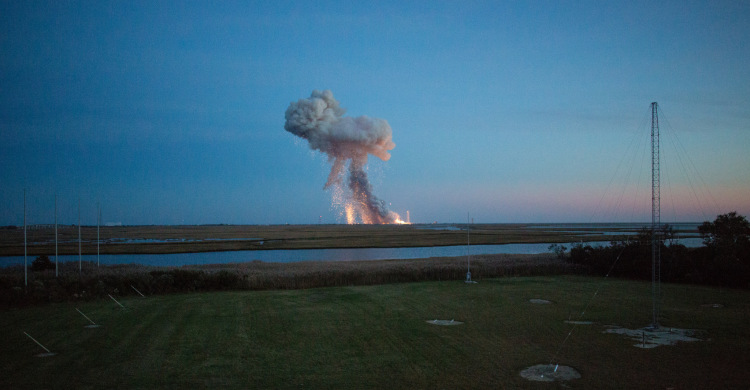Just seconds after launching at 6:22PM EDT on October 28th, 2014, an uncrewed Orbital Sciences Antares rocket exploded over the launchpad at the NASA Mid-Atlantic Regional Spaceport Pad 0A at the Wallops Flight Facility in Wallops Island, Virginia. There are currently no reports of any injuries caused by the explosion, but NASA officials advise that anyone in the area avoid picking up anything that may be debris from the Antares explosion.
The rocket was carrying a Cygnus cargo spacecraft intended as a resupply mission for the International Space Station (ISS). “The crew of the International Space Station is in no danger of running out of food or other critical supplies,” said William Gerstenmaier, Associate Administrator of NASA’s Human Exploration and Operations Directorate in a statement. Another resupply ship was launched successfully from Russia at 3:09AM EDT on October 29th, 2014, just hours after the Antares failure.
Orbital Sciences has released an official statement about the explosion.
Orbital Sciences Corporation confirms that today’s Antares rocket launch from NASA’s Wallops Flight Facility was not successful. Shortly after lift-off from the Mid-Atlantic Regional Spaceport Pad 0A at 6:22 p.m. (EDT), the vehicle suffered a catastrophic failure. According to NASA’s emergency operations officials, there were no casualties and property damage was limited to the south end of Wallops Island. Orbital has formed an anomaly investigation board, which will work in close coordination with all appropriate government agencies, to determine the cause of today’s mishap.
“It is far too early to know the details of what happened,” said Mr. Frank Culbertson, Orbital’s Executive Vice President and General Manager of its Advanced Programs Group.“As we begin to gather information, our primary concern lies with the ongoing safety and security of those involved in our response and recovery operations. We will conduct a thorough investigation immediately to determine the cause of this failure and what steps can be taken to avoid a repeat of this incident. As soon as we understand the cause we will begin the necessary work to return to flight to support our customers and the nation’s space program.”
Orbital will provide more information as it becomes available and is verified.
NASA TV was live streaming the launch, and many other observers have also posted photos and video of the explosion to social media, including pilot Ed Sealing who captured the disaster while in flight.
photos via NASA










